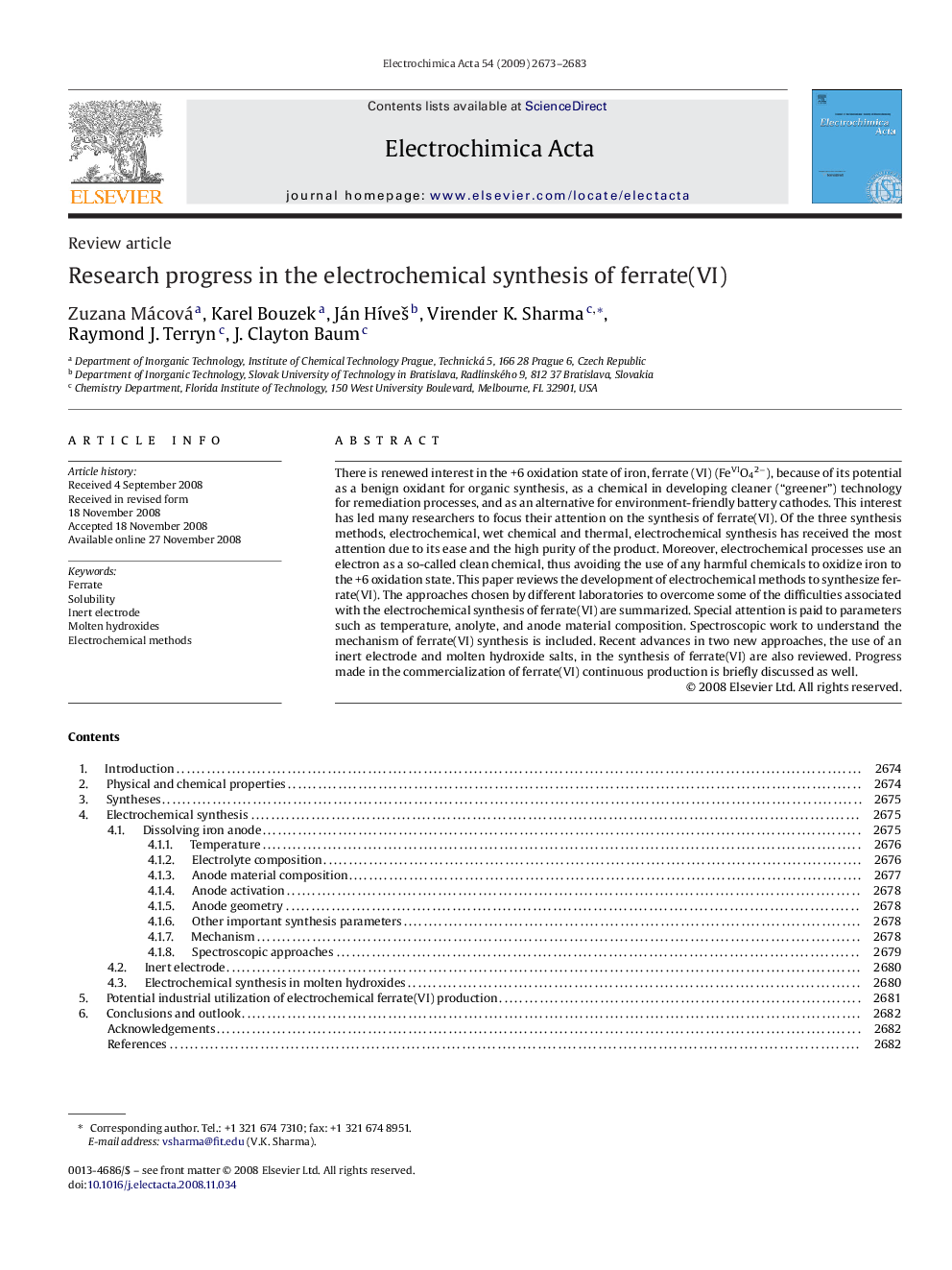| Article ID | Journal | Published Year | Pages | File Type |
|---|---|---|---|---|
| 192604 | Electrochimica Acta | 2009 | 11 Pages |
There is renewed interest in the +6 oxidation state of iron, ferrate (VI) (FeVIO42−), because of its potential as a benign oxidant for organic synthesis, as a chemical in developing cleaner (“greener”) technology for remediation processes, and as an alternative for environment-friendly battery cathodes. This interest has led many researchers to focus their attention on the synthesis of ferrate(VI). Of the three synthesis methods, electrochemical, wet chemical and thermal, electrochemical synthesis has received the most attention due to its ease and the high purity of the product. Moreover, electrochemical processes use an electron as a so-called clean chemical, thus avoiding the use of any harmful chemicals to oxidize iron to the +6 oxidation state. This paper reviews the development of electrochemical methods to synthesize ferrate(VI). The approaches chosen by different laboratories to overcome some of the difficulties associated with the electrochemical synthesis of ferrate(VI) are summarized. Special attention is paid to parameters such as temperature, anolyte, and anode material composition. Spectroscopic work to understand the mechanism of ferrate(VI) synthesis is included. Recent advances in two new approaches, the use of an inert electrode and molten hydroxide salts, in the synthesis of ferrate(VI) are also reviewed. Progress made in the commercialization of ferrate(VI) continuous production is briefly discussed as well.
